What's driving Black violence and deadly conflict?
By Bryan Crawford -Contributing Writer- | Last updated: Apr 25, 2017 - 1:26:08 PM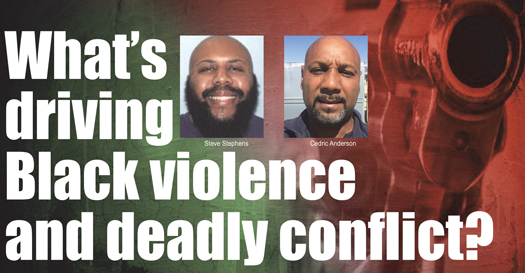 |
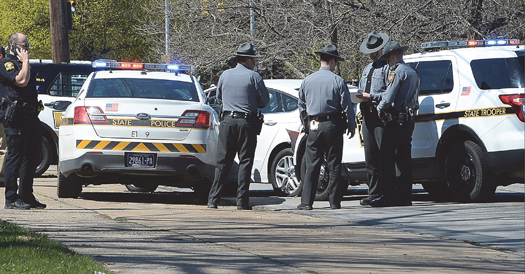
Pennsylvania State Police investigate the scene where Steve Stephens, the suspect in the random killing of a Cleveland retiree posted on Facebook, was found shot dead Apr. 18, in Erie, Pa. Acting on a tip, Pennsylvania State Police spotted Stephens, 37, in Erie County, in the state’s northwest corner, and went after him. After a brief chase, he took his own life, authorities said. Photo: AP/Wide World Photos
|
CHICAGO—Every day Black communities are inundated with violence. Whether it’s heinous acts committed against one another, encounters with police, or simply watching television or listening to music.
Violence has almost become a subculture that Black people not only embrace, but in many ways, openly promote.
Of course, it helps to understand the root of the problem, which in an overwhelming number of Black communities—particularly in large cities—is almost always tied to abject poverty, substandard living conditions, poor or failing schools, general lack, and feelings of hopelessness and despair.
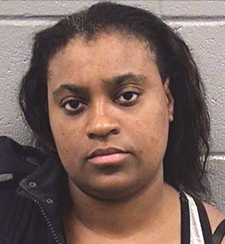
This undated photo provided by the Cook County Sheriff’s Offi ce shows Vandetta Redwood. A federal jury returned a not guilty verdict Jan., 26, for Redwood, who was accused of supplying her teenage cousin with a gun authorities say the girl used to kill a 14-year-old rival after a Facebook feud over a boy in Chicago in 2014. Photo: AP/Wide World Photos
|
In recent weeks, several incidents have played out in the media where Black people seem to just snap and commit heinous acts of violence.
Are these incidents, and many others, proof that Blacks are prone to violence as the popular narrative goes? Or is there something deeper going on?
Mental health and the Black community
“The first thing we need to acknowledge is that as a people, we are in unspeakable pain,” Terrie Williams, noted author of the book “Black Pain” and staunch mental health advocate, told The Final Call. “There’s violence everywhere we turn and it’s very difficult to navigate how you move through the world. For Black people, there is so much pain and suffering and we haven’t been able to process it and get help because so many of us don’t believe in going to talk to a mental health professional.”Black people, by and large, suffer through unspeakable amounts of both direct and indirect trauma. It’s also important to note that Blacks in America suffer from intergenerational traumas that have been passed down from the time their ancestors first set foot on the shores of this country.
On this very subject, Mental Health America wrote, “Historical adversity, which includes slavery, sharecropping and race-based exclusion from health, educational, social and economic resources, translates into socioeconomic disparities experienced by African Americans today. Socioeconomic status, in turn, is linked to mental health: People who are impoverished, homeless, incarcerated or have substance abuse problems are at higher risk for poor mental health.”
Mental Health America also uncovered a number of staggering statistics relating to Black people as well. While 13.2 percent (45.7 million people) of the U.S. population is Black, 16 percent (6.8 million people) have a diagnosable mental illness.
The U.S. Department of Health and Human Services’ Office of Minority Health, found that Black people are 20 percent more likely to report serious psychological distress as compared to Whites, are more likely to harbor feelings of hopelessness, worthlessness and sadness than Whites, and Black people who live below the poverty line are three times more likely to report psychological distress compared to those living above poverty.
The most distressing finding is that while Black teenagers are less likely than White teens to die from suicide, they are much more likely than their White counterparts to make an attempt at taking their own life.
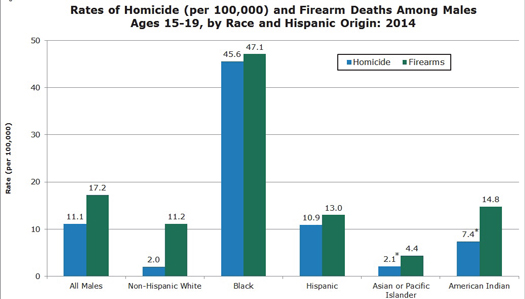 |
 |
“One of the things I’m very aware of, and very much attuned to is that Black people really struggle with mental health issues,” Dr. Cynthia Grace, a licensed clinical psychologist based in Harlem, told The Final Call.
“There has definitely been an intergenerational transmission of trauma, and we’ve gotten to the point where the accumulation of violence has gotten really high.
“A lot of the mental health issues that we have in the Black community go unaddressed, and one symptom of that is crime and violence that we commit against ourselves. Also, the extremely high rates of suicide among young Black people between the ages of 14 and 25 has increased exponentially. So, what that says is there is a real loss of hope because people are less inclined to take their own lives if there is a sense that things can be better.”
Dr. Grace noted the reason mental health has such a negative stigma among Black people is twofold: The first is that Blacks are largely in denial about their trauma, and the second is Black people place such a high value on character, to discuss their problems with someone exposes vulnerability which makes Blacks uncomfortable. So, Blacks are prone to wearing masks to show the world that they’re okay, but on the inside, there is so much deep and troubling turmoil that the outward representation of that pain, oftentimes, is crime and violence.
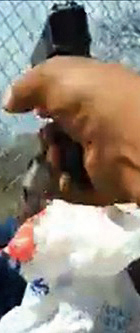
Purported video still of Steve Stephens killing Robert Godwin Sr. and sharing the video on Facebook. Photo: MGN Online
|
“In the Black community, there is a lot of depression, a lot of anxiety, and what I’m seeing more of now is a lot of people are having panic attacks because they are dealing with so much trauma,” said Dr. Grace.
“Many Black people feel that craziness is a White thing,” Dr. Grace said. “There is also a feeling that seeing a therapist is a betrayal of their spirituality because it’s an indication that they aren’t strong believers in a higher power.”
Dr. Grace feels many Blacks don’t seek help because they’ve been conditioned to give all of their problems to God and let him work things out.
Violence as a public health crisis
In this country, the solution to crime and violence is to remove people from society by locking them up and throwing away the key. This, of course, disproportionately affects Black people who make up just 13 percent of the U.S. population, but account for 35 percent of jail inmates and 37 percent of prison inmates, of the 2.2 million people currently incarcerated in this country.
Gun violence, in particular, has been labeled by the American Public Health Association as a legitimate public health issue.
In 2015, the Centers for Disease Control and Prevention found that one million total years of life are lost annually in the U.S. due to gun violence. Additionally, homicide by gun in this country is 25 times higher than that of other high-income countries comparable to the U.S.
However, more money is being pumped into the system every year for incarceration, as opposed to rehabilitation or even doing a deep and thorough study on the root causes driving the violence seen in Black communities, and how to reverse it.
“Back in the 1980s, the CDC started treating violence as a public health problem because they saw an uptick in intentional violence,” Dr. Obie Clayton, chair of the Clark Atlanta University Department of Sociology and Criminal Justice, told The Final Call. “However, this can be traced back to the introduction of crack cocaine and increased drug use in the Black community, which triggered an increase in violence. But at the same time, you had this epidemic of mass incarceration in the ’80s when the prison population almost quadrupled. So, intentional violence is a problem in this country in general, but we have a disproportionate amount of it housed in the Black community. Also in the ’80s, we forgot that rehabilitation was the role of the criminal justice system and began viewing it as a punitive punishment system without offering any real help.”
“If people don’t treat you with compassion and instead, treat you as though you are inherently criminal, that further erodes your sense of hope in the sense that there is something you can do to make your situation better,” said Dr. Grace. “I was taught years ago that if people are more criminally oriented, there’s very little that you can do for them, and not even mental health care would be a viable solution. The only option for these people was jail or prison because they were not able to be rehabilitated. So, I think that mental health, as it relates to violence, is a huge public health issue that has gone completely ignored because we have been relegated as being nothing more than commodities. The system makes money off of the pain of Black people.”
“This goes back to Dr. Kenneth Clark’s work way back in the 50s and 60s. Being looked at as the worst that society has to offer gives you a negative self-esteem,” said Dr. Obie Clayton.
He added, “People see you walking down the street and they’ll go to the other side simply because you’re wearing a hoodie, or have cornrows in your hair. So, when you have to deal with that every day, it does something to you. W.E.B DuBois developed the famous concept of double consciousness, where you’re an American, but you’re Black, so you have to put on this image to survive in a society that views you as being inferior, unintelligent, criminally inclined and just second class. When you have to deal with that every day, you need a counselor. We all do.”
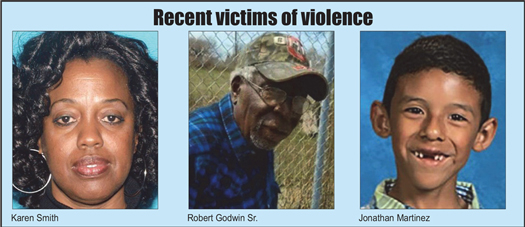 |
The purposeful dehumanizing and negative portrayal of Black people in society is the very reason Terrie Williams, in her sphere of influence, makes it a point to let people know they are loved and that someone cares about them
“Sometimes, when I’m just walking through Harlem, I see brothers and I just smile at them—especially the ones who are considered dark-skinned,” she said. “I do this because so many times they’re the ones who are more intimidating than others, whether it be White folks, Black folks, anybody. So, I want them to know that they matter, and that they’re loved.”
Another issue relating to violence and public health is what Dr. Grace refers to as vicarious trauma, meaning you don’t have to be a direct victim of violence to be traumatized by it.
“Psychologically, the exposure to so much violence weakens people, and a lot of times, they’re unaware of what they’re reacting to; whether it be a strong feeling of anxiety, or depression. They don’t recognize that it’s because a week ago, a neighbor or a friend, or just someone in the community where they live, died violently,” she explained.
This, of course, can be exacerbated by incidents such as when Steve Stephens in Cleveland, allegedly uploaded a video to Facebook of him shooting 74-year-old Robert Godwin Sr. on the sidewalk, for no reason. Or Vester Lee Flanagan in Virginia who shot and killed news anchor Alison Parker and cameraman Adam Ward during a live television broadcast.
Violence is often sensationalized on social media and in mainstream media because people are constantly inundated with such disturbing imagery and visuals.
This can have a negative impact on mental wellbeing, and even more troubling people may be unaware of its psychological impact.
Blacks are also statistically more likely to suffer death from gunplay. The Violence Prevention Center calls the gun deaths of Black teens and young adults a national and too often ignored crisis. “Our research shows the Black homicide victimization rate is four times the national homicide victimization rate, and more than six times the homicide victimization rate for Whites. Nearly 85 percent of Black homicide victims are shot and killed with guns. These facts are both appalling and unacceptable. An important part of ending the gun violence epidemic is to reduce homicides in the African-American community,” the center said.
In late March, the group reported that Missouri had the highest Black homicide victimization rate in the nation with a rate of 34.98 per 100,000, which is more than double the national Black homicide victimization rate and more than eight times the overall homicide rate nationwide.
It’s annual study, “Black Homicide Victimization in the United States,” looked at 2014 homicide data, the most recent year for which comprehensive, federal national data was available.
“Each year this report reveals the devastating and disproportionate impact homicide, almost always involving a gun, has on Black men, boys, women, and girls in America,” said Violence Policy Center executive director Josh Sugarmann. “These deaths devastate families and traumatize whole communities. We hope our research will not only help educate the public and policymakers, but aid community leaders already working to end this grave injustice.”
In Missouri, there were 250 Black homicide victims in 2014, resulting in a homicide rate of 34.98 per 100,000. That year, the national Black homicide rate was 16.38 per 100,000, and the overall national homicide rate was 4.19 per 100,000.
For homicides in which the weapon used could be identified, 87 percent of the Black homicide victims in Missouri were shot and killed with guns, said the center. Nationwide, 83 percent of Black homicide victims were killed with guns, it added.
Black Americans make up 14 percent of the U.S. population but are victims of more than half of all gun homicides, according to the Everytown for Gun Safety Support Fund. On average there are nearly 12,000 gun homicides a year in the U.S., the group said.
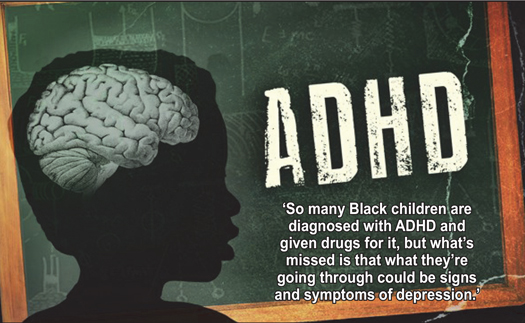 |
Solving the violence problem?
There seems to be no easy fix to curbing the problem of violence plaguing the Black community. In the field of medicine, a popular solution is to treat people, especially young children, with prescription drugs to help them manage their emotions. But oftentimes, this does more harm than good.“We have to treat the whole person, and you don’t see that happening,” explained Dr. Clayton. “Black youth—especially males—are more likely to be diagnosed as suffering from Attention Deficit Disorder and are more likely to be medicated for those issues. So, what happens then? You have young boys in the 3rd, 4th and 5th grades, and sometimes even younger than that, being given medications for conditions they could’ve been talked through. We’re not giving them access to the treatment they really need, and we’re limiting them with what they can learn through these diagnoses, which makes them much more prone to drug use, unemployment and eventually, crime.”
When it comes to these misdiagnoses and the prescribing of certain drugs to Black people, Dr. Grace says this is no accident.
“So many Black children are diagnosed with ADHD and given drugs for it, but what’s missed is that what they’re going through could be signs and symptoms of depression,” said Dr. Grace. “But part of the issue with prescribing these ADHD medications to Black children is that it brings in a lot of money. I believe that this is symptom of professional neglect and racism. When they see our kids, they don’t think depression, they think ADHD; there’s something wrong with their brains.”
Dr. Obie Clayton feels too much emphasis is placed on the actual problem of Black violence, and not enough on what is causing it—which could potentially be a real key to reversing the problem.
“I’d like to see a renewed emphasis on revitalizing job opportunities for our young people,” he said. “We also need to come up with better modes of educating them that aren’t steeped in the tradition of the way education was done 50 years ago. We need to adopt new modes of active learning. One of the things we haven’t done is asked the younger people, what it is that they want because you’re not going to solve any problems if you don’t ask people what they need, and then try and give it to them.
“When people have lack of access to health care, goods, services, housing and opportunity, those are the real problems that contribute to violence. But somehow, interpersonal violence is always viewed as the main issue and I tell people all the time, that’s not the number one issue. The number one issue is being able to take care of your family and having a real opportunity to do so, which is where it all starts.”